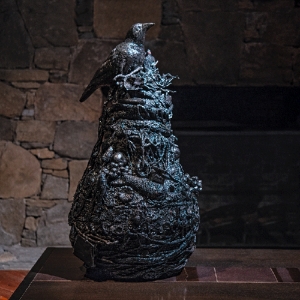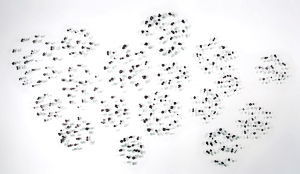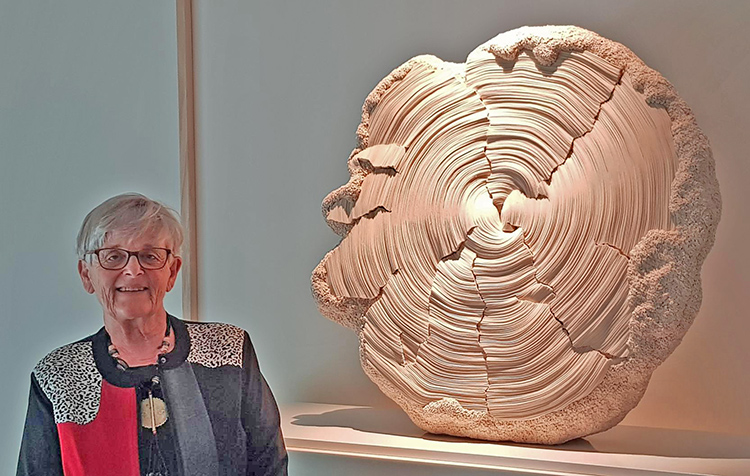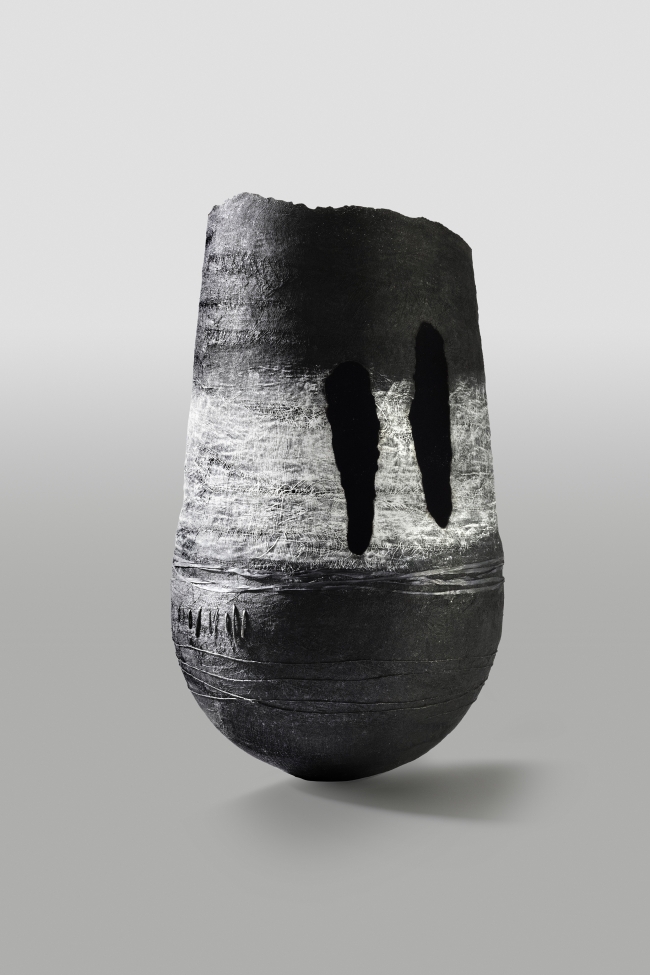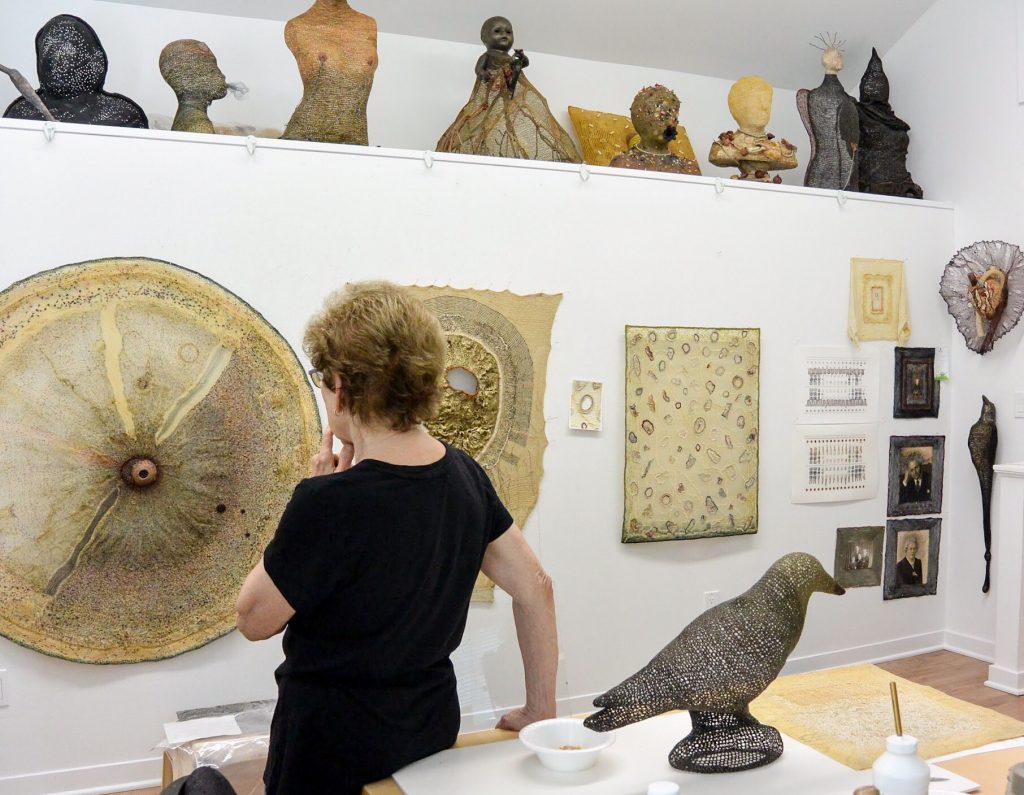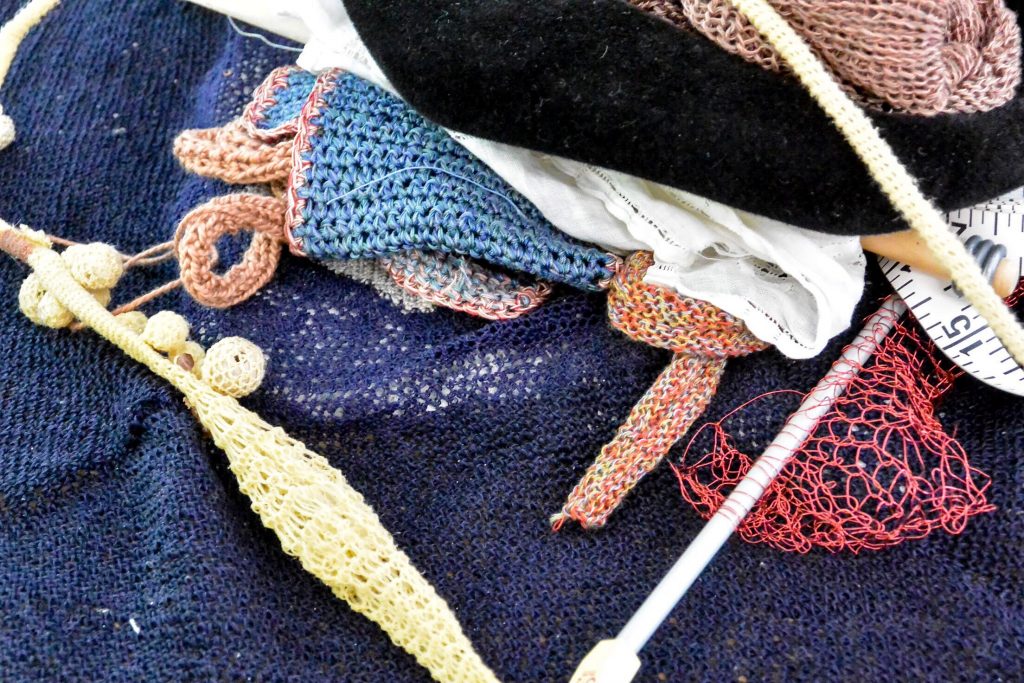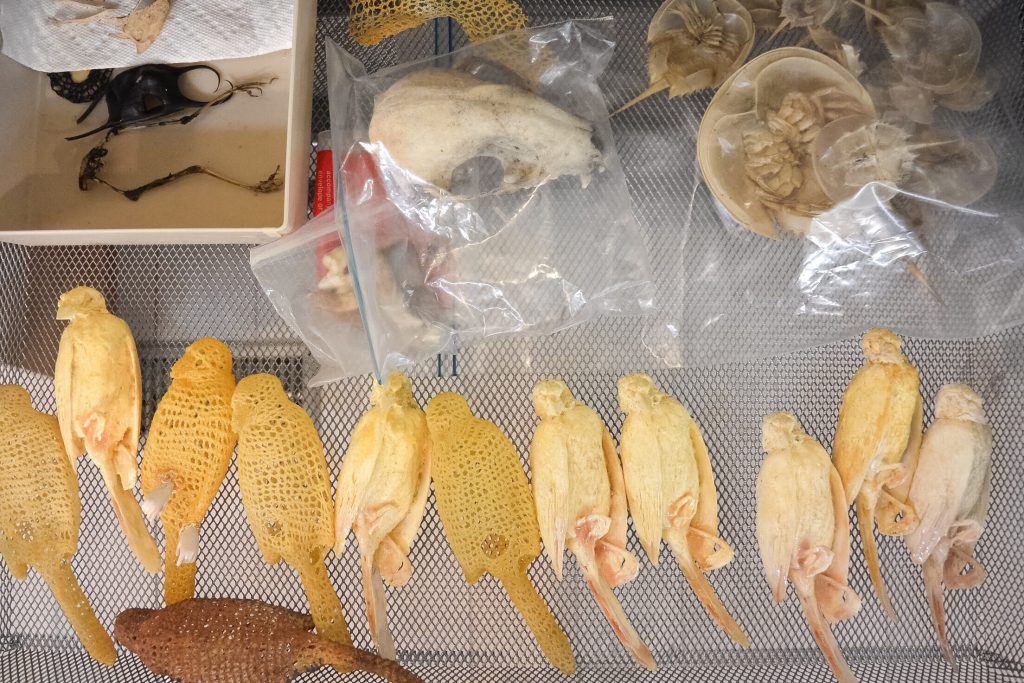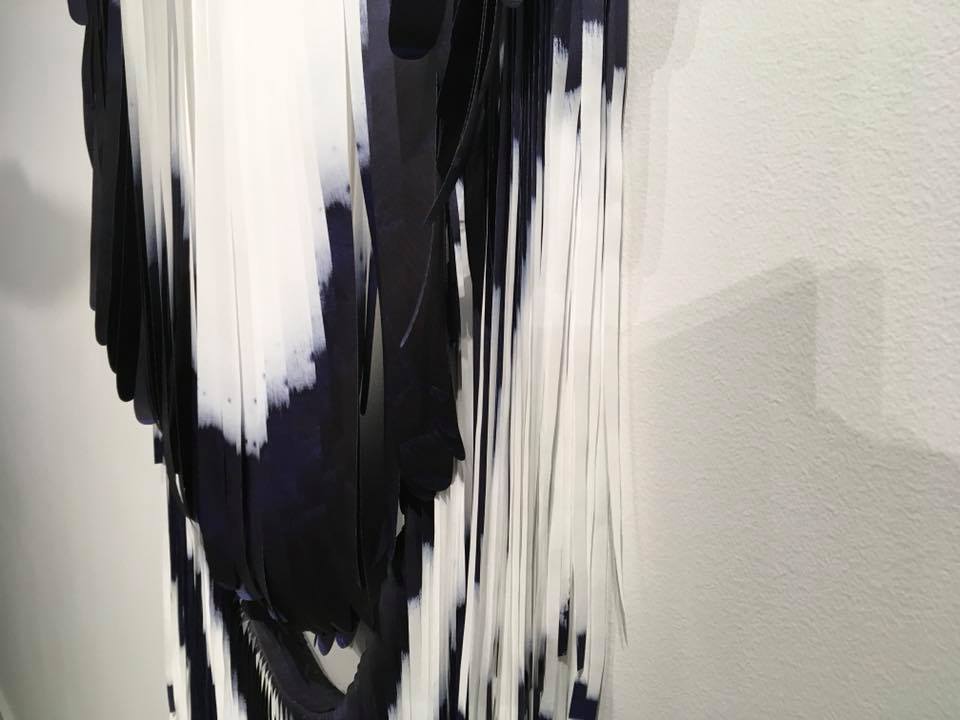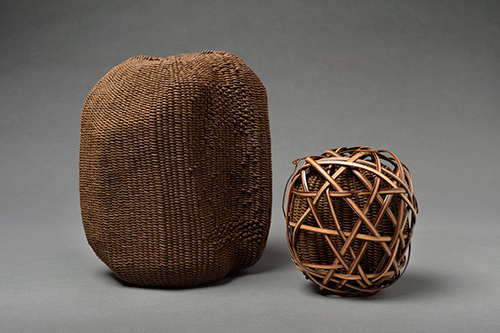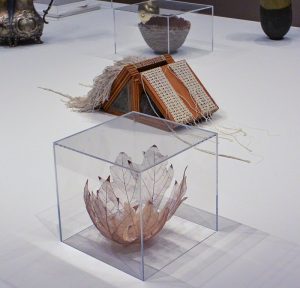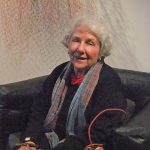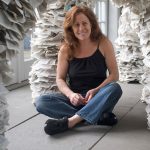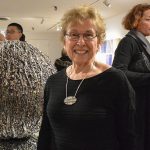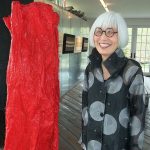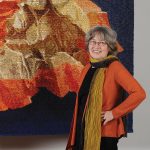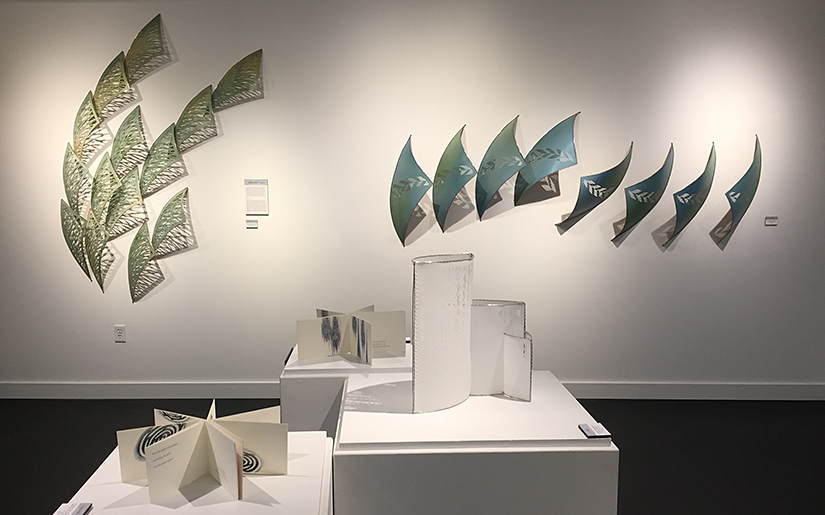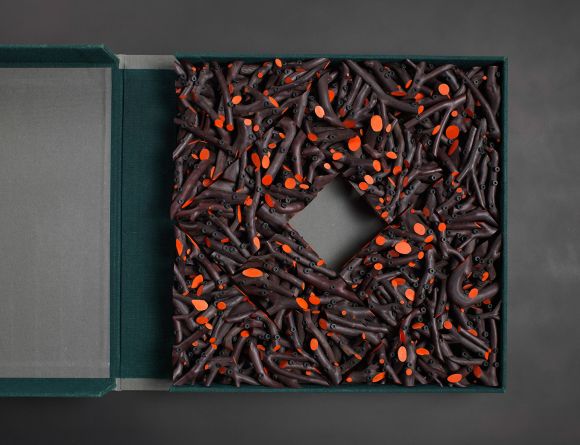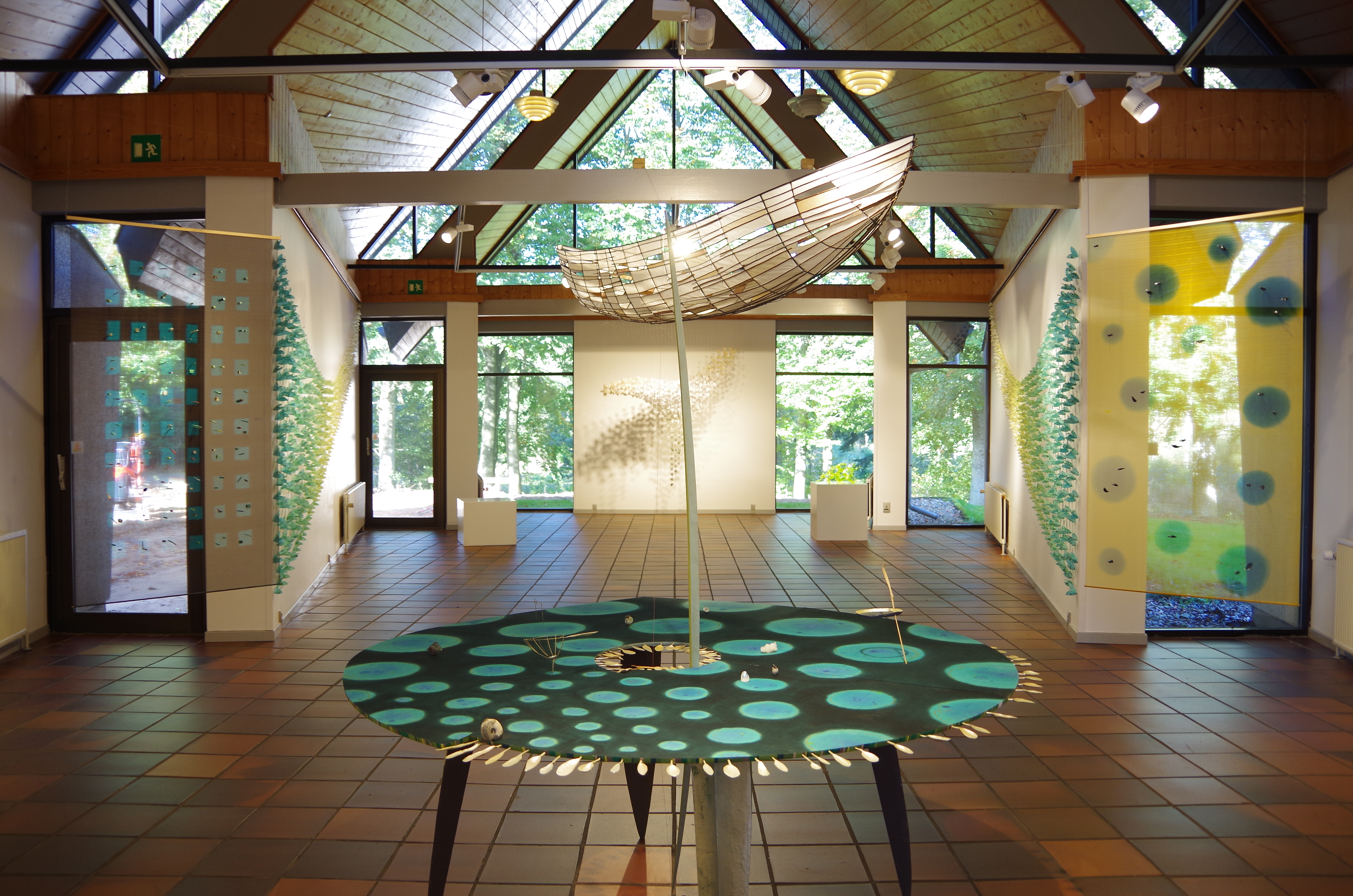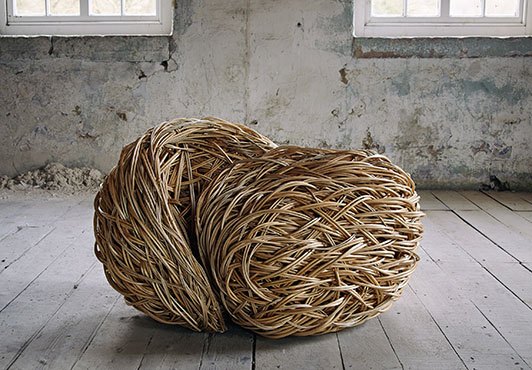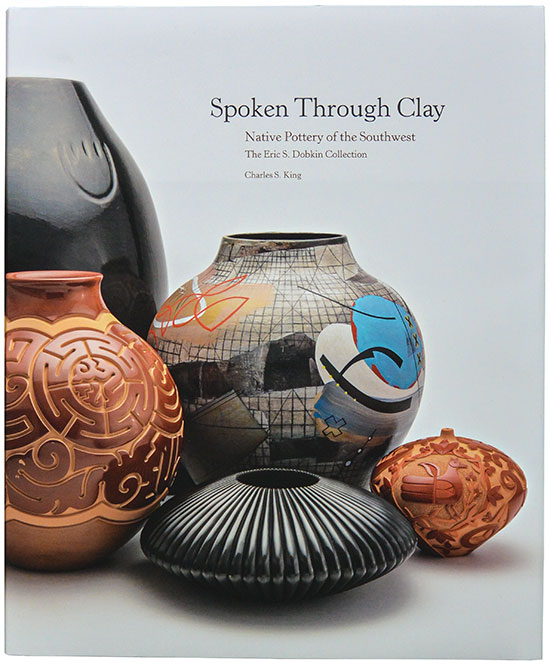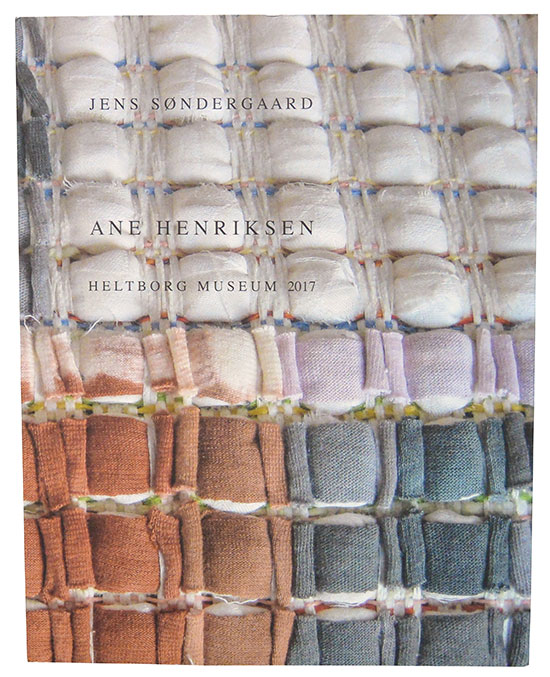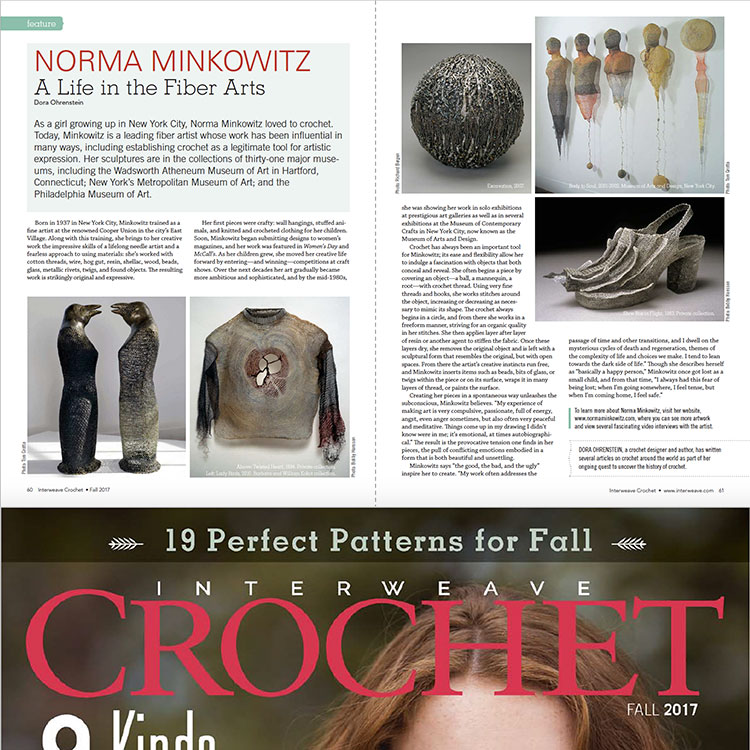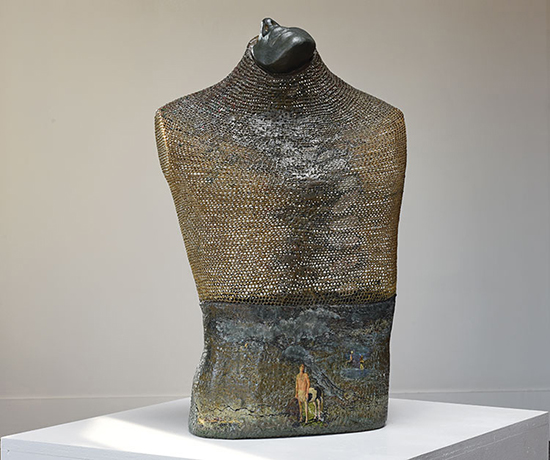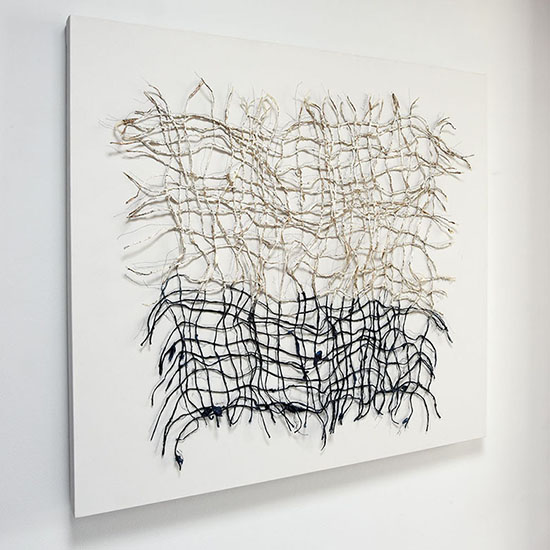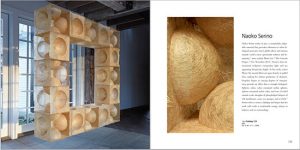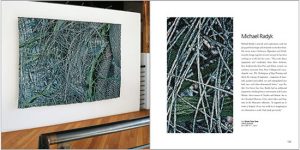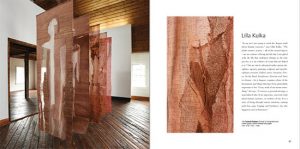
The Path which Leads to Center 18-05, Chang Yeonsoon, abaca fiber, barberry roots dye, 100% pure gold, 17” x 17” x 6.5”, 2017.
On tap in August were spectacular pieces by Chang Yeonsoon, Norma Minkowitz, Eduardo Portillo & Mariá Eugenia Dávila and Marian Bijlenga.
We kicked off August with Chang Yeonsoon’s The Path which Leads to Center 18-05. In much of her work, Yeonsoon dyes her fibers with indigo. However, in making The Path which Leads to Center 18-05 she used barberry root dye and 100% pure gold leaf. The process which Yeonsoon uses to apply the gold lead is a Korean technique called geumbak. Though geumbak is usually used with natural lacquer, Yeonsoon was able to create a new lacquer with gold leaf.
On our trip to Norma Minkowitz’ studio this summer, which you can read about in our blog post HERE, we picked up Trove. The sculpture is made using small trinkets Minkowitz has collected throughout her life, therefore the reason why she named it Trove. To take a closer look at Trove watch the video we made HERE.
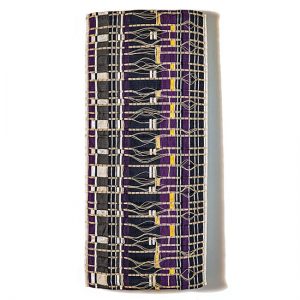
Transición, Eduardo Portillo & Mariá Eugenia Dávila, alpaca; metallic yarns and silver leaf; moriche palm fiber, silk, 56″ x 24.25”, 2018
Next up, we had Eduard Portillo and Mariá Eugenia Dávila’s wall-hanging Transición. The wall-hanging’s vibrant purple hue makes the woven “mosaic” impossible to go unnoticed. Portillo and Dávila source and create all of their own materials. The Venezuelan couple grows their own mulberry trees on slopes of the Andes (Mulberry trees are the sole food source for silkworms), rear their own silkworms, obtain the silkworm threads and color the threads with their own natural dyes to use in making textiles.
To wrap-up the month of August, we shared Marian Bijlenga’s Fish Scale. Bijlenga is not afraid of challenging herself to work with new materials. In the past, she has worked with materials such as horse hair, viscose, paper and glass. Her piece Fish Scale is in fact made with extremely delicate fish scales. In making the piece, Bijlenga carefully connected a network of scales using very fine thread, giving the illusion that the scales are floating in mid-air. To see Fish Scale in detail, check out THIS video.

